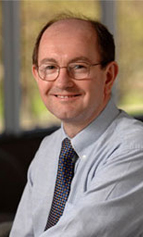 Dr. John O'Keefe
Dr. John O'Keefe
When a problem seems insurmountable, it is tempting to simply dismiss or ignore it. In such cases, we often hope the problem will go away or that its consequences won't affect us. If ever a problem in the health care domain appeared daunting, surely it must be the challenge of restoring sight to the millions of poor people in India afflicted by cataracts and other eye conditions.
Aravind Eye Care System (www.aravind.org), a non-profit organization based in rural India, took on the challenge of bringing surgical eye care to its poorest citizens back in 1976 and has since gained global recognition for its innovation and success. The founder, a retired ophthalmic surgeon known universally as "Dr. V," set out with ferocious dedication to examine and overcome the problem in radically new ways.
Dr. V held a strong belief that "there is great joy in doing something beautiful" for others, feeling that by helping the most vulnerable people he was also bettering himself. He was also rather inspired by the words of Goethe, "Knowing is not enough; we must apply. Willing is not enough; we must do."
These same words are evoked in a new report from the US Institute of Medicine (IOM) titled Improving Access to Oral Health Care for Vulnerable and Underserved Populations. I can only imagine they were chosen because the authors feel the time has come for action, not words. Lack of access to oral health care is the most daunting challenge for our sector and it may require Dr. V-style determination to move the profession beyond the talking stage.
To make progress, the IOM committee believes that "improving access to oral health care is a critical and necessary first step to improving oral health outcomes and reducing disparities." The IOM report contains 10 recommendations that aim to transform the delivery of care to vulnerable groups by changing the education of providers, improving reimbursement levels for care in a variety of settings and altering the regulation of oral care professionals to allow certain "mid-level providers" to operate more independently of dentists.
It will certainly be a challenge to have many different stakeholders working together in a coordinated manner over a sustained period of time to bring about the transformation envisaged by the IOM. However, I would suggest that the new CDA working group examining access to care for seniors and children in Canada pay close attention to this report and determine which recommendations might also apply in our country.
While such reports set the course toward a distant promised land, it is important to take the tiny first steps on such great journeys. I believe it is also important for the profession to encourage and celebrate those who make these initial efforts, especially when positive outcomes may not be immediately apparent.
One area that comes to mind is that of continuing education about the provision of oral health care for seniors. Organizers of such courses are taking positive actions, even if the demand or allure of this topic might not be as great as others. The University of Toronto faculty of dentistry is convening a 1-day symposium on geriatric dentistry on October 15, bringing together a variety of experts to speak to the issue of our aging population and the wave of older adults who will need our care in the years ahead.
Short recorded previews from some of the symposium speakers are available from the Editor's Blog on jcda.ca. I would also encourage you to consider taking CE in geriatric dentistry in the coming year, as the demands and challenges on our profession from this growing population segment will be great indeed.
John P. O'Keefe
1-800-267-6354, ext. 2297
jokeefe@cda-adc.ca
